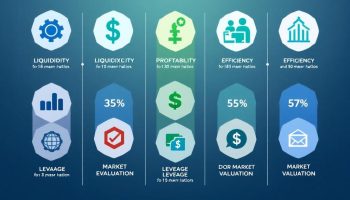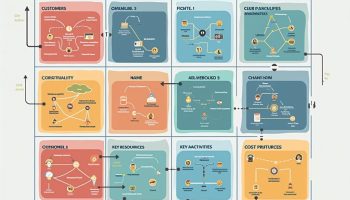
The Importance of Software Risk Assessments
With cyber attacks occurring every 40 seconds and ransomware attacks increasing at a staggering 400% year over year, a software risk assessment provides critical insights into organizational vulnerabilities. You can strategically identify, evaluate, and mitigate potential threats by implementing a comprehensive risk assessment framework that analyzes the likelihood and potential harm of software risks.
Key Takeaways
- Software risk assessment helps organizations proactively identify and prioritize potential cybersecurity vulnerabilities.
- Regular assessments create a shared understanding between management and IT departments about security risks.
- Multiple identification methods, including frameworks like NIST and ISO 27001, enhance risk assessment effectiveness.
- Prioritizing risks based on likelihood and potential impact enables strategic resource allocation.
- Continuous risk assessment is essential as threats and business environments constantly evolve.
Risk assessments allow you to spot weaknesses in your software systems before hackers exploit them. This proactive approach saves money and protects your reputation by preventing costly breaches. The NIST Cybersecurity Framework offers valuable guidelines for conducting thorough assessments.
Each assessment creates a documented trail of your security efforts, demonstrating due diligence to regulators and stakeholders. Your IT team gains clear direction on which vulnerabilities need immediate attention versus those that can be addressed later.
The process involves identifying assets, recognizing threats, analyzing vulnerabilities, and calculating potential impacts. Modern threats require modern solutions – incorporating automated security scanning tools alongside manual reviews produces the most comprehensive results.
After completing your assessment, develop specific mitigation strategies for high-priority risks. Set deadlines, assign responsible parties, and track progress through regular updates. Schedule your next assessment immediately – security isn’t a one-time effort but an ongoing commitment to protecting your digital assets.
“In an era where cyber attacks strike every 40 seconds, a proactive software risk assessment is not just a luxury but a necessity, empowering organizations to uncover and prioritize their vulnerabilities. By embracing a robust risk assessment framework, businesses can effectively navigate the ever-evolving threat landscape, ensuring that resources are strategically allocated to protect their most critical assets.”
The Evolving Landscape of Software Risk Assessment
Software risk assessment is a systematic process for identifying vulnerabilities and threats to your organizational operations, assets, and individuals. You’ll need to evaluate both the likelihood of risks occurring and the potential harm if they do. With cyber attacks occurring every 40 seconds and ransomware attacks increasing at a staggering 400% year over year, implementing a proper software risk assessment example is no longer optional.
According to the World Economic Forum’s Global Risks Report, cyberattacks and data breaches consistently rank among top global risks. Taking a proactive rather than reactive approach allows you to prevent issues before they impact your production environments. This process requires ongoing evaluation as systems, threats, and business environments constantly evolve.
Comprehensive Risk Assessment Frameworks
When developing your software risk assessment example, consider these established frameworks that provide structured approaches:
- NIST Cybersecurity Framework – Offers a flexible structure to identify, protect, detect, respond to, and recover from cyber risks
- ISO 27001 – Provides international standards for information security management systems
- FAIR (Factor Analysis of Information Risk) – Quantifies risk in financial terms
- OCTAVE (Operational Critical Threat, Asset, and Vulnerability Evaluation) – Self-directed approach for organizational risk assessment
- FMEA (Failure Mode and Effects Analysis) – Evaluates where and how systems might fail
Using multiple identification methods together creates a more comprehensive assessment. You’ll find that combining collaborative project approaches with structured frameworks yields the most thorough results.
For a practical software risk assessment example, you might start by:
- Identifying all software assets and their criticality to operations
- Documenting known vulnerabilities through scanning tools
- Assessing the likelihood and impact of each potential risk
- Prioritizing risks based on severity scores
- Developing effective risk response plans for each high-priority item
Organizations conducting regular risk assessments are better equipped to mitigate risks according to IBM’s studies. Your assessment process should create a shared understanding of security risks within business contexts while breaking down organizational barriers between senior management and IT staff.
The landscape of software risk assessment continues to evolve with emerging threats. You’ll need to adapt your approach accordingly, maintaining a continuous improvement cycle rather than viewing risk assessment as a one-time activity. By implementing a robust software risk assessment example in your organization, you’ll enhance the protection of sensitive information and ensure stability across your software applications.

Understanding the Software Risk Assessment Process
Software risk assessment is a systematic approach for identifying vulnerabilities and threats to your organizational operations, assets, and individuals. This proactive process evaluates both the likelihood of risks occurring and the potential harm if they do materialize. With cyber attacks occurring every 40 seconds and ransomware attacks increasing at 400% year over year, implementing a structured software risk assessment has become critical for organizational success.
The software risk assessment process follows key steps that enhance your organization’s security posture. You’ll need to begin by defining the project scope, which sets the foundation for effective risk management. After establishing scope, you’ll move through risk identification, evaluation, prioritization, team assignment, monitoring, and post-resolution review.
Several identification methods can strengthen your assessment:
- Checklist analysis for systematic verification of known risks
- Brainstorming sessions to uncover unexpected vulnerabilities
- Causal mapping to understand risk relationships and dependencies
- SWOT analysis to identify strengths, weaknesses, opportunities, and threats
The following table outlines a software risk assessment example for a healthcare application:
| Risk Category | Identified Risk | Likelihood | Impact | Mitigation Strategy |
|---|---|---|---|---|
| Data Security | Patient information exposure | Medium | High | Implement end-to-end encryption |
| Infrastructure | Server downtime | Low | High | Deploy redundant systems |
| Compliance | HIPAA violations | Medium | Critical | Regular compliance audits |
| Third-party | Vendor security breach | Medium | High | Vendor assessment protocol |
For comprehensive assessment, you should utilize multiple identification methods together. Industry standards like the NIST Cybersecurity Framework and ISO 27001 provide structured approaches that can guide your risk response planning.
Strategic Benefits for Leadership
Implementing a thorough software risk assessment provides tangible benefits for your organization. It offers cost justification by providing concrete evidence of vulnerabilities that justify security budget requests. The process breaks organizational barriers by facilitating collaboration between senior management and IT staff, creating a shared understanding of security risks within the business context.
Regular software risk assessments enable strategic resource allocation rather than forcing your team into constant reaction to security incidents. This proactive approach clarifies which risks require immediate attention versus those needing fewer resources, improving your decision-making process through clear prioritization of security concerns.

Strategic Benefits for Organizational Leadership
You’ll gain significant advantages when implementing proper software risk assessment examples in your organizational strategy. Risk assessments provide concrete evidence of vulnerabilities, helping you justify security budget requests to stakeholders. This data-driven approach transforms abstract security concerns into tangible business risks that leadership can understand and act upon.
Effective software risk assessment breaks down organizational silos by facilitating crucial collaboration between senior management and IT departments. This creates a shared understanding of security risks within the broader business context, allowing strategic planning that accounts for both technical and business perspectives.
Organizations conducting regular risk assessments experience enhanced protection of sensitive data and improved stability of software applications. An IBM study confirms that companies implementing systematic risk assessment processes are better equipped to identify, evaluate, and mitigate potential threats before they cause damage.
The software risk assessment example below demonstrates how to prioritize vulnerabilities based on impact and likelihood:
| Risk Category | Potential Threat | Likelihood | Impact | Risk Score | Mitigation Strategy |
|---|---|---|---|---|---|
| Data Security | Customer PII breach | High | Critical | 25 | Implement encryption and access controls |
| System Integrity | SQL injection vulnerability | Medium | High | 16 | Code review and input validation |
| Operational | Service disruption | Low | Medium | 6 | Redundancy planning |
This risk assessment example helps you:
- Allocate security resources strategically rather than reactively
- Identify which risks require immediate attention
- Improve development productivity by addressing vulnerabilities proactively
- Make better decisions through clear prioritization of security concerns
When conducting your software risk assessment, you’ll need to define clear objectives based on your specific organizational needs. The assessment should align with risk appetite and tolerance levels established by leadership. By implementing regular assessment schedules instead of one-time security audits, you’ll build a resilient security posture that evolves with emerging threats.
Organizations that implement risk assessment as a fundamental component of their strategy are 50% more effective at managing IT security risks.
hbr.org
Resource Optimization Through Effective Assessment
You’ll gain significant advantages by implementing a structured software risk assessment example in your organization. A properly executed assessment helps you allocate resources strategically rather than constantly reacting to security incidents. This approach transforms how you distribute your budget, staff, and technical capabilities across your security landscape.
When you conduct a thorough risk assessment, you’ll clearly identify which software risks demand immediate attention versus those requiring minimal resources. For instance, a critical vulnerability in your payment processing system might need urgent patching and additional security controls, while a low-risk issue in an internal testing environment could be scheduled for future maintenance windows. This prioritization prevents wasted resources on low-impact issues when critical vulnerabilities remain unaddressed.
Your team’s productivity will improve as they can proactively fix software vulnerabilities before exploitation occurs. This software risk assessment example demonstrates how you can shift from a reactive security posture to a preventative one, reducing emergency fixes that disrupt planned work.
Strategic Resource Benefits
The software risk assessment example provides a framework for better decision-making through clear prioritization of security concerns. You’ll establish objective criteria for evaluating risks, including:
- Potential financial impact of security breaches
- Likelihood of exploitation
- Regulatory compliance implications
- Effect on business operations
- Reputation damage potential
This systematic approach significantly reduces costs associated with security breaches and system failures. According to the World Economic Forum’s Global Risks Report, cyberattacks and data breaches consistently rank among top global risks, with attacks occurring approximately every 40 seconds.
The assessment creates a foundation for continuous improvement in your security posture by:
- Establishing measurable security baselines
- Identifying resource gaps in your current security program
- Creating accountability for risk remediation
- Enabling data-driven security investment decisions
- Supporting qualitative risk assessment methods that evolve with your organization
Your organization will experience enhanced protection of sensitive information and ensure the stability of software applications. The software risk assessment example demonstrates how you can transform security from a cost center to a business enabler, allowing you to make confident decisions about where to direct your limited resources for maximum security benefit.
According to a study by Gartner, organizations that adopt a proactive cyber risk management approach can reduce the cost of security breaches by up to 50%.
gartner.com
Implementing Risk Assessment in Your Organization
Establishing a robust software risk assessment example requires a strategic approach rather than a one-time security audit. You’ll need to begin with clear scope definition to ensure your assessment targets the right systems and processes.
When implementing a risk assessment framework, you should first gather a cross-functional team including IT, security, operations, and business stakeholders. This collaborative approach helps break down organizational barriers between senior management and technical staff, creating a shared understanding of security risks within your business context.
The following steps provide a structured approach to implementation:
- Define assessment scope and objectives
- Identify critical assets and their value to the organization
- Document potential threats and vulnerabilities
- Evaluate likelihood and impact of each risk
- Prioritize risks based on severity and business impact
- Develop mitigation strategies for high-priority risks
- Assign ownership for remediation actions
- Establish monitoring and review cycles
Your assessment schedule should align with both business cycles and risk appetite tolerance levels. For most organizations, quarterly assessments provide sufficient frequency while allowing time for remediation between cycles.
A comprehensive software risk assessment example would include technical vulnerabilities alongside operational risks. For instance, you might identify both SQL injection vulnerabilities in your code and procedural gaps in your deployment process that could lead to unauthorized access.
Selecting Appropriate Assessment Tools
The tools you choose should match your organization’s maturity level and resource constraints. While enterprise organizations might implement comprehensive governance, risk, and compliance (GRC) platforms, smaller teams can effectively use specialized risk assessment software with fewer features.
Consider these options when selecting tools for your software risk assessment example:
- Open-source vulnerability scanners
- Commercial compliance frameworks
- Threat modeling applications
- Risk register templates
- Automated code analysis tools
- Effective risk response planning templates
Remember to document your methodology thoroughly to demonstrate compliance with regulatory requirements. Your documentation should include assessment scope, methodologies used, findings, remediation plans, and risk response strategies to safely address identified issues.
By implementing regular software risk assessments, you’ll position your organization to proactively address security concerns before they impact operations. This approach transforms security from a cost center into a business enabler by preventing costly incidents and supporting confident innovation.






